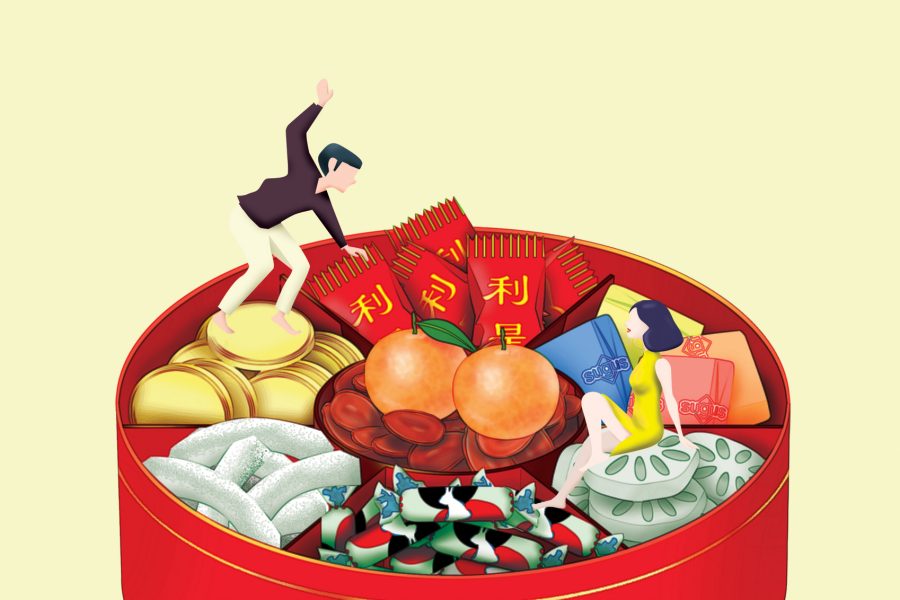Chuen hup – the tray of togetherness

As a child, the best thing about Chinese New Year...well, that’s the lai see. A red packet stuffed full of money is hard to say no to at any age. But the second-best thing is the chuen hup – the “tray of togetherness”.
This is a lacquered box that features a multitude of compartments – normally an auspicious eight of them – each brimming with a different kind of delicious treat. From candied lotus seed or lotus root for the uncles, to melon seeds, husked between the teeth for the grandparents; and for the kids, of course, White Rabbit candies and Sugus sweets: individually wrapped doses of sense memory which pull me back to my grandmother’s house, as we visit on the second day of the New Year.
Each house you visit has its own chuen hup, filled with its own mix of treats: each a personal take on what’s tasty and hospitable to offer. Every constituent part represents a different kind of blessing and good fortune for the year: nuts for longevity; candied coconut for harmonious family; kumquats for prosperity – and in the case of all those seeds, fertility and abundance. (The sweets are mostly just to keep the kids happy. Not that the red packets haven’t already done that job.)
I have my personal favourites, but it doesn’t really matter what’s inside the chuen hup. It matters that it’s there in the first place. It’s a symbol of generosity, of welcoming people into your home. And personally, I like the thought that the chuen hup represents one of the best things about this time of year: choice and possibility in the days and months to come. Eight compartments; eight auspicious paths to take. All delicious, all different – all filled with the promise of a new year.
More inspiration
- China – the Chinese Mainland, Hong Kong SAR, Macao SAR and Taiwan Region
- Hong Kong SAR - English
- Chinese Mainland (China) - English
- Taiwan, China - English
- 香港特別行政區 - 繁體中文
- 中国內地 - 简体中文
- 中國台灣 - 繁體中文
- Africa
- South Africa - English
- Asia
- Bangladesh - English
- Korea - English
- Singapore - English
- Cambodia - English
- 한국 - 한국어
- Sri Lanka - English
- India - English
- Malaysia - English
- Thailand - English
- Indonesia - English
- Maldives - English
- ประเทศไทย - ภาษาไทย
- Indonesia - Bahasa Indonesia
- Myanmar - English
- Vietnam - English
- Japan - English
- Nepal - English
- Việt Nam - tiếng Việt
- 日本 - 日本語
- Philippines - English
- Australasia
- Australia - English
- New Zealand - English







